| Columns Retired Columns & Blogs |
Another great amplifier from the 90's :-) .........
All of the No.333's measurements were taken using the balanced inputs. After a one-hour, 1/3-power preconditioning, the heatsinks were too hot to keep my hands on. The wideband S/N Ratio (ref. 1W into 8 ohms) measured a reasonable 62.5dB, this improving to 79.5dB when A-weighted. The channel separation (not shown) was better than 90dB below 5kHz, decreasing above that frequency to a still-good 70dB at 50kHz, due to capacitive coupling between the channels. The amplifier's voltage gain into 8 ohms measured 26.7dB, it didn't invert polarity, and its input impedance was approximately 100k ohms.
The output impedance was low at around 0.037 ohms in the bass and midrange, rising to 0.046 ohms at 20kHz, meaning that the frequency response driving our simulated loudspeaker load (fig.1, lower trace, offset by –1dB for clarity) was effectively identical to that into a resistive load (top traces). However, note the ultrasonic response rise, peaking by 1.7dB at 100kHz. This is related to the overshoot and damped ringing visible on the '333's squarewave response (fig.2); both are due to a minor problem with the feedback circuit. I didn't note anything untoward in my auditioning, however, so I must assume that this measured behavior is benign (though its presence does make me a little uncomfortable).
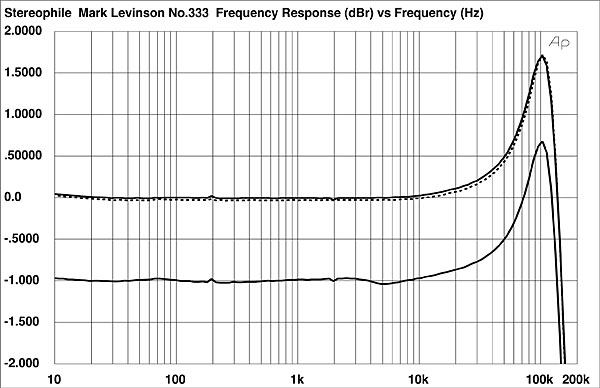
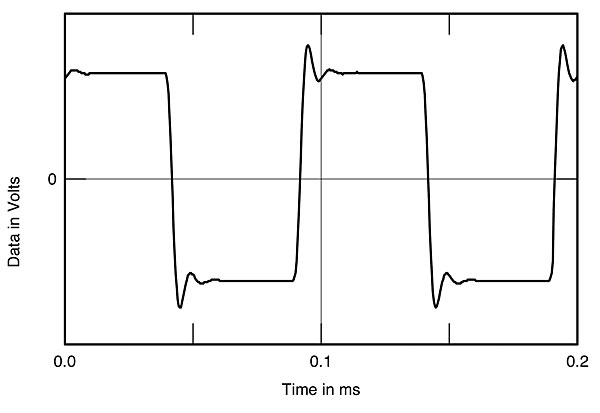
It may also be related to the manner in which the THD+noise varies with frequency (fig.3). Although the distortion reading at these low power levels is very low, note the slight rise both at higher frequencies and into lower loads. I suspect, however, that this behavior is due to the amplifier starting to run out of closed-loop gain-margin at high frequencies. It, too, is probably benign. Fig.4 shows that even at high powers into 8 ohms, the harmonic content is primarily third-harmonic with noise. At high powers into lower impedances (not shown), some higher harmonics appeared.
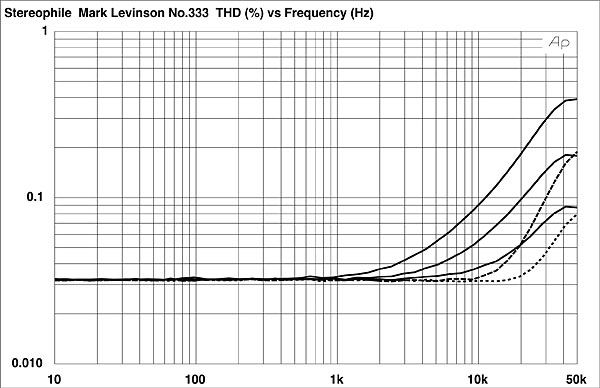
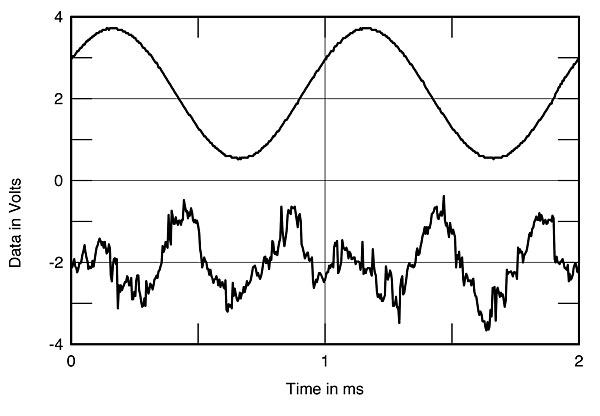
The No.333's output spectrum, driving a low-frequency tone (50Hz) at 232W into 4 ohms, is shown in fig.5. The dominant harmonic is the third, at 150Hz, though this is still at a very low –90dB. At higher powers and into lower impedances, the fifth harmonic makes an appearance. Note that the only AC-supply harmonic evident in this graph is the 120Hz, at a low –98dB. The Levinson output spectrum driving a mix of 19kHz and 20kHz tones into a 4 ohm load remained relatively clean until very high power levels. Even at 30V RMS with this difficult signal (just below visible clipping), the 1kHz difference component was almost 100dB down, and the 18kHz and 21kHz intermodulation products were almost 80dB down.
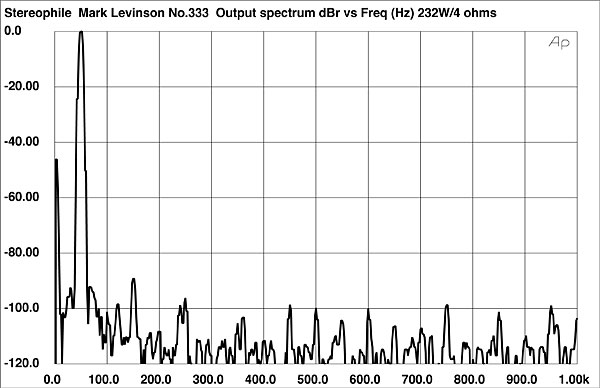
Finally, the No.333 outperformed its power specification in a big way. As can be seen from fig.6, it clipped (defined as 1% THD+N) at 400W into 8 ohms (26dBW) with both channels driven and a wall voltage of 117V. This almost doubled to 700Wpc into 4 ohms (25.4dBW) with both channels driven, and almost doubled again at 1250W into 2 ohms (25dBW), one channel driven. Note that the AC line voltage drooped to 114V for these last two measurements, implying that with a "stiff" AC supply (as Madrigal recommends), the No.333 will pump out even more watts.—John Atkinson
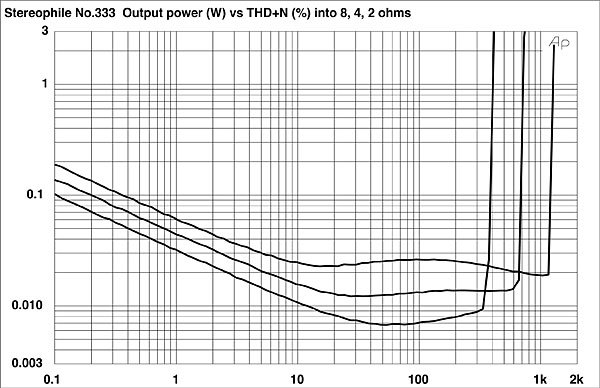

Another great amplifier from the 90's :-) .........

Hmm, I wonder how this would compare to my Krell FPB 400cx from back around that same time period? Even with its 400 wpc power rating, it doesn't seem like it has all that much bass impact.